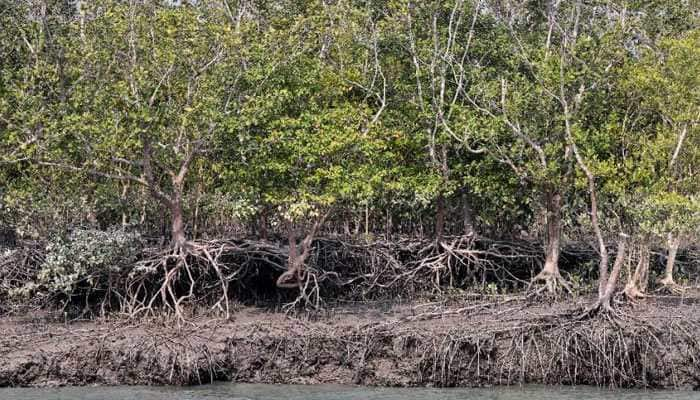New Delhi: The long stretch of Sunderban mangrove forest, one of the world’s largest (140,000 acres), has been severely affected due to the mangrove deforestation in the social forestry areas by some local political figures. The island sets an example of continuous ecological processes due to a complex network of tidal rivers, mudflats, and small islands of salt-tolerant mangrove forests. Earlier, large-scale deforestation led to serious threats of erosion; however, at present, the residents of Sunderban and forest officials are keeping a strict eye on such human activities. Unfortunately, nothing has been done to ensure tight supervision in areas of social forestry where deforestation is occurring and areas are being converted for economic uses such as pisciculture.
Most of the livelihood in Sunderban is dependent on Mangrove forests as the Man and Biosphere (MAB) plays a significant role in the financial dependence of the residents. “The people of Sunderban are dependent on the forest due to the variety of fishes, crabs and so on. The people sell them and earn money, also mangrove forests attract tourists. In Sunderban, a large chunk of money comes from tourism and therefore, it is important to save the social forestry areas,” Umashankar, who has been collaborating and assisting a lot of researchers in Sunderbans, told The Sunday Guardian. One can often witness numerous core zones on the eastern side as compared to the west. Asked about the reason, another researcher, who wished to remain anonymous, told this paper, “As a researcher, I have seen that there are many inaccessible areas in the eastern side as compared to the western zone. Most of the western zone undergoes deforestation and thus there has been a change in the course of the river. Also, we have seen a lot of human establishments on the eastern side.”
However, when The Sunday Guardian approached the forest official, she was told that the officers were uninformed about any such ongoing activities in the eastern side of social forestry areas of Sunderban. “We keep a strict check on any degradation or deforestation of mangrove plantation in Sunderban, but we have not been informed about anything at present,” Bishwajit, a forest officer, told this paper.
As Sunderban has been going through the degradation of mangroves in the social forestry areas, the Sundarban Development (SD) Board has been conducting an afforestation programme that has three components-mangrove plantations, strip plantation, and farm forestry. The Board’s Social Forestry wing implements these programmes through three Range Offices in Namkhana, Canning, and Hasnabad, as well as six Beat Offices in Sagar, Roydighi, Joynagar, Canning, Nezat, and Hasnabad. Forestation of mangroves in the Char land intertidal zones, which was later expanded to mudflats. The programmes such as growing mangrove seedling nurseries and then transplanting them into silted up trenches and pits, and direct planting of mangrove seedlings grown naturally in the char lands. With a few exceptions, the SD Board has successfully established mangrove forests in large areas of char lands next to settlements. Similarly, fruit-bearing trees were prioritised under the programme of strip plantation. Seedlings of timber, fuel, and fruit plant species are cultivated for delivery to intended households and organisations for plantation under Farm forestry. In 2020, due to the Amphan cyclone, Bengal Chief Minister Mamata Banerjee stated that on World Environment Day, 5 June, 2020, around 50 million mangroves would be planted in the Sundarbans in the near future.
Sunderban social forestry areas are under threat
- Advertisement -

